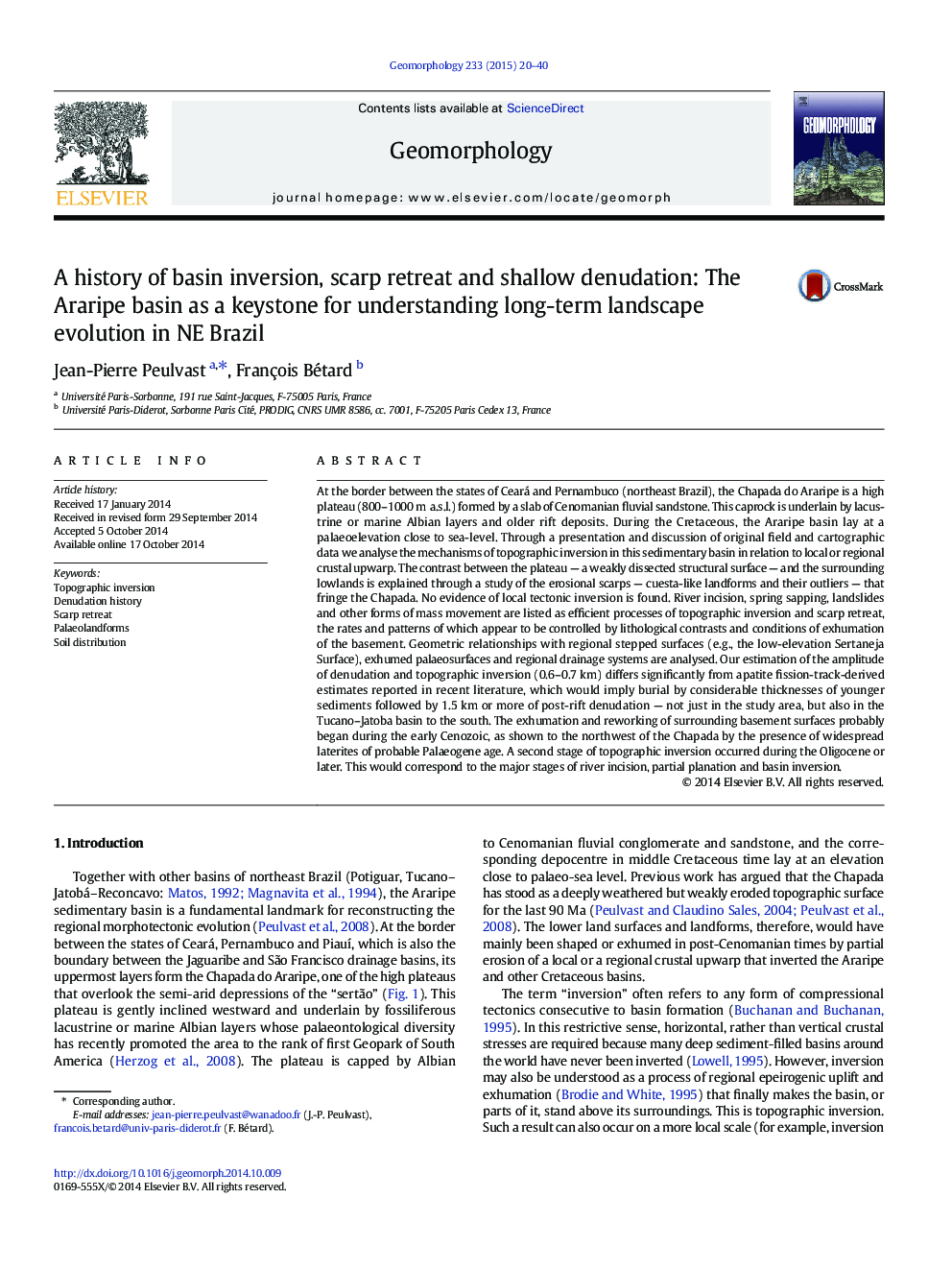| کد مقاله | کد نشریه | سال انتشار | مقاله انگلیسی | نسخه تمام متن |
|---|---|---|---|---|
| 4684221 | 1635416 | 2015 | 21 صفحه PDF | دانلود رایگان |

• The Araripe basin is a high sandstone plateau today occurring in inverted position
• Inversion was caused by differential erosion responding to regional crustal upwarp
• No evidence of local tectonic inversion is found
• Sapping and landslides appear as efficient processes of inversion and scarp retreat
• Chronology of inversion is proposed based upon morphostratigraphy and morphopedology
At the border between the states of Ceará and Pernambuco (northeast Brazil), the Chapada do Araripe is a high plateau (800–1000 m a.s.l.) formed by a slab of Cenomanian fluvial sandstone. This caprock is underlain by lacustrine or marine Albian layers and older rift deposits. During the Cretaceous, the Araripe basin lay at a palaeoelevation close to sea-level. Through a presentation and discussion of original field and cartographic data we analyse the mechanisms of topographic inversion in this sedimentary basin in relation to local or regional crustal upwarp. The contrast between the plateau — a weakly dissected structural surface — and the surrounding lowlands is explained through a study of the erosional scarps — cuesta-like landforms and their outliers — that fringe the Chapada. No evidence of local tectonic inversion is found. River incision, spring sapping, landslides and other forms of mass movement are listed as efficient processes of topographic inversion and scarp retreat, the rates and patterns of which appear to be controlled by lithological contrasts and conditions of exhumation of the basement. Geometric relationships with regional stepped surfaces (e.g., the low-elevation Sertaneja Surface), exhumed palaeosurfaces and regional drainage systems are analysed. Our estimation of the amplitude of denudation and topographic inversion (0.6–0.7 km) differs significantly from apatite fission-track-derived estimates reported in recent literature, which would imply burial by considerable thicknesses of younger sediments followed by 1.5 km or more of post-rift denudation — not just in the study area, but also in the Tucano–Jatoba basin to the south. The exhumation and reworking of surrounding basement surfaces probably began during the early Cenozoic, as shown to the northwest of the Chapada by the presence of widespread laterites of probable Palaeogene age. A second stage of topographic inversion occurred during the Oligocene or later. This would correspond to the major stages of river incision, partial planation and basin inversion.
Journal: Geomorphology - Volume 233, 15 March 2015, Pages 20–40